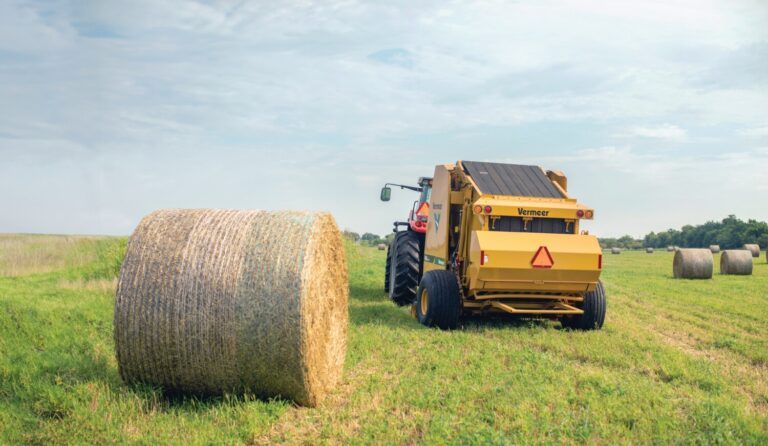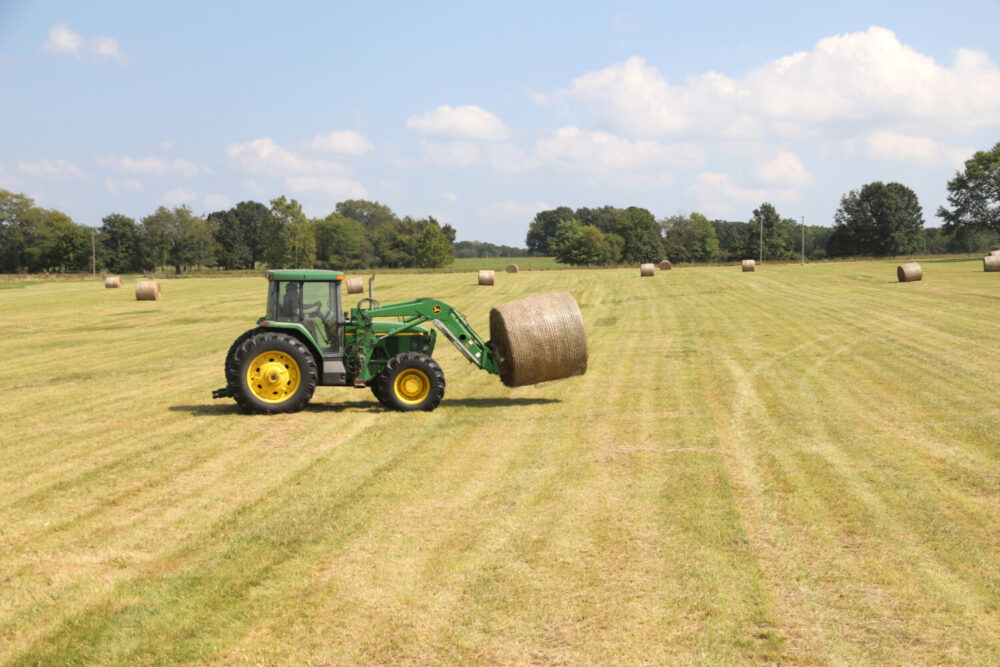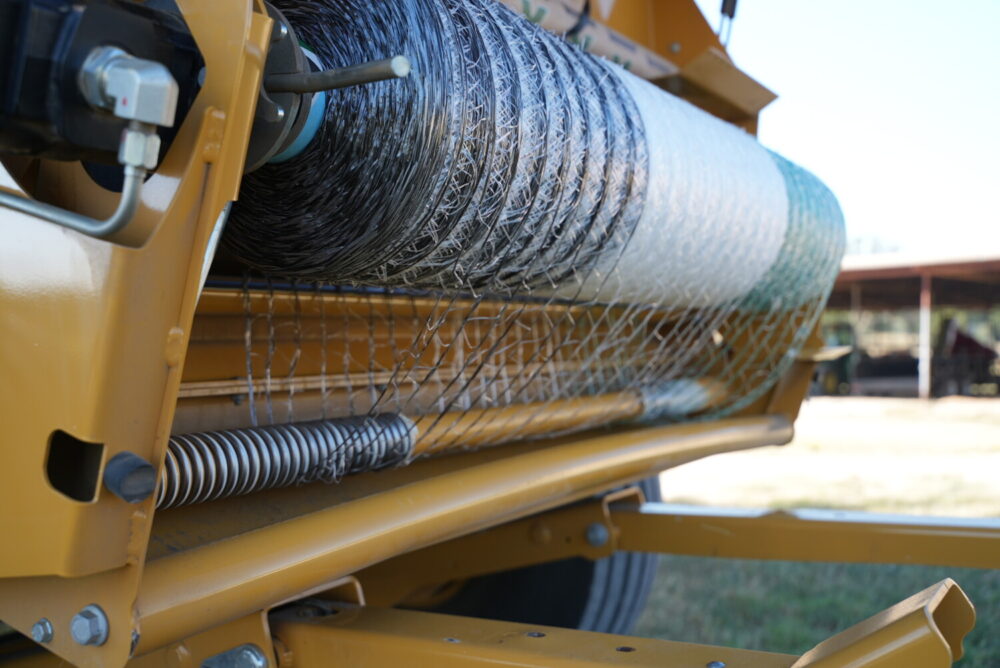
Is Baling Twine or Netwrap Better For Your Operation?
December 2024
There’s no denying weather and timing are two of the biggest factors in hay production and its quality. Unfortunately, you can’t change the weather, and you can’t always control your timing. However, there are factors you can control — like whether you use baling twine or netwrap on your bales.
Your choice can impact your productivity in the field and the nutritional quality of your hay. It’s not just about bale presentation. It’s about potential storage losses, herd health, feed value, weight gains, animal production, and fuel, material and labor costs.
The factors below and your production goals will help you decide if baling twine or netwrap is best for you.
Does baling twine or netwrap last longer?
Twine: The durability of your twine-wrapped bales likely depends on the type of material you’re using. Twine is often available in polypropylene, plastic and sisal varieties. With the right settings, any of these materials can help you create a durable bale.
Netwrap: Netwrapped bales oftentimes maintain their shape and hay quality better over time than those wrapped with baling twine because netwrap forms a more secure and evenly distributed barrier. That barrier keeps hay drier, reduces handling damage and protects the hay from UV damage.
Which provides better protection for hay, baling twine or netwrap?
Twine: Baling twine, while effective, doesn’t provide the same level of coverage or protection against weather as netwrap. Twine of any kind will fare better on a pallet or under shelter, as twine-wrapped bales do not have as strong of water-shedding capabilities as netwrapped bales.
Netwrap: Netwrapped bales have better water-shedding qualities, helping prevent water damage during storage. Plus, netwrap typically has better UV resistance, protecting the hay from sunlight degradation.
A high-density polyethylene (HDPE) netwrap, like Vermeer® Net, maximizes these protective characteristics and minimizes stretching.
Is it easier to handle bales wrapped in baling twine or netwrap?
Twine: If you use sisal twine, it can start to degrade over time — increasing the possibility of losing hay during transportation or storage.

Netwrap: The *American Society of Agricultural and Biological Engineers (ASABE) study found netwrap helped reduce storage and handling losses by as much as 65% compared to twine. How? Tightly wrapped bales maintain their shape with a secure, full-width netted casing. It’s typically tighter, more uniform and more stable in all types of storage conditions.
Which is better for silage, baling twine or netwrap?
Twine: Baling twine doesn’t offer the same level of protection against air and moisture infiltration as netwrap, but it can certainly be used to bale high-moisture forage. Both netwrap and twine are often used with plastic wrap during the baleage process. However, the type of twine you use is important. According to Kevin Schinners, Ph.D., University of Wisconsin, rodenticide-treated sisal twine tends to degrade the plastic film over time. Holes in your plastic film can create opportunities for loss through mold or yeast creation.
Netwrap: Netwrap provides a more uniform coverage, which helps to maintain the integrity of the bale and keeps out oxygen and moisture, crucial for proper fermentation in silage. Plus, using netwrap can help minimize the possibility of creating holes in the plastic film later and help create a smoother bale surface before plastic wrap.
Which is more cost-effective: baling twine or netwrap?
Twine: Baling twine offers hay producers an economical way to make hay bales. A roll of twine can cost up to 90% less than netwrap. However, you’ll need more twine per bale compared to netwrap. That’s because balers need about 20 revolutions of twine to create a sturdy bale. Netwrap, on the other hand, needs only two or three rotations to finish a bale.

Netwrap: Netwrap is the more expensive choice on paper. However, it can help you save in other ways — like the rotation example above. By using fewer turns to create a bale, netwrap can help hay producers create more bales in the same amount of time. A study conducted by the ASABE indicated a round baler using netwrap could create 32% more bales per hour than the same baler using twine. As mentioned previously, netwrap can also help minimize storage and handling loss — providing additional value to producers and their customers.
Creating a better bale
There’s no right or wrong answer when it comes to choosing baling twine or netwrap for your operation. The key is understanding the type of hay you’re putting up, your risks and real costs in labor and time, and how much you’re willing to commit to minimize potential hay losses.
Talk to your local Vermeer dealer to further discuss if baling twine or netwrap is best for your operation.
*Transactions of the ASABE. @2009 https://elibrary.asabe.org/abstract.asp?aid=26825
Information noted above was gathered from a third party who was advised his/her experience might be featured in marketing materials. This article contains third-party observations, advice or experiences that do not necessarily reflect the opinions of Vermeer Corporation, its affiliates or its dealers. Individual results may vary based on care and operation of machine and crop and field conditions, which may adversely affect performance.
Vermeer Corporation reserves the right to make changes in engineering, design and specifications; add improvements; or discontinue manufacturing at any time without notice or obligation.
Equipment shown is for illustrative purposes only and may display optional accessories or components specific to their global region.
Please contact your local Vermeer dealer for more information on machine specifications.
Vermeer, the Vermeer logo, Equipped to Do More and the Black, White, Green bale wrap color scheme are trademarks of Vermeer Manufacturing Company in the U.S. and/or other countries.
© 2024 Vermeer Corporation. All Rights Reserved.
